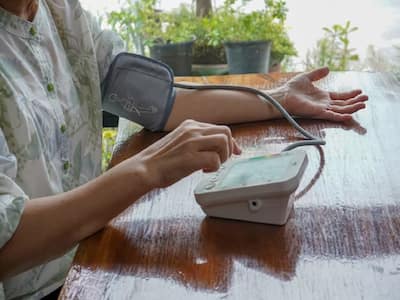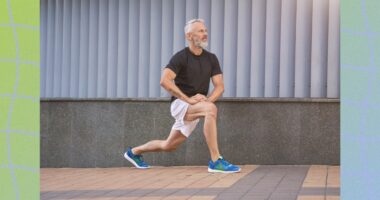
Almost 88 per cent of Indians don’t have their blood pressure under control, according to WHO.
High blood pressure or hypertension affect millions of people worldwide. It is often called the “silent killer” because it can cause serious health problems such as heart disease, stroke, and kidney failure, without any noticeable symptoms. According to recent data (WHO), at least one in four adults in India has hypertension and only 12 per cent have their blood pressure under control.
Monitoring your blood pressure regularly can help you detect any potential problems early on. Here, Dr. Santosh Kumar Dora, Senior Cardiologist at Asian Heart Institute, Mumbai, shares a few tips for measuring blood pressure at home.
READ RELATED: Coconut Oil Pulling: 5 Oral Health Benefits Of This Ayurveda-Recommended Technique
- It’s not about which arm but about what state: There is a 10-20 mm difference between the BP on the right and left arm. Usually, the blood pressure measurement is higher on the right arm. If the difference between the measurements of both arms is higher than that, one must see a doctor.
- Choose the right cuff size: It is crucial to choose the right cuff size to get accurate readings. If the cuff is too small or too large, it can affect the accuracy of the reading. You can measure your arm circumference to determine the appropriate cuff size. You have to place the cuff on your bare skin.
- Measure your blood pressure correctly: It is essential to follow the correct procedure while measuring your blood pressure. Sit in a relaxed position for at least five minutes before taking the measurement. Place the cuff around your upper arm and make sure it is snug but not too tight. Makes sure your arm is at heart level and do not talk or move during the measurement. Avoid caffeine about 30 minutes before your BP measurement as it contributes to an increased blood pressure and heart rate.
- Take multiple readings: The blood pressure changes through the day. Hence, it’s a good idea to take it at least twice. Also, basis your schedule, identify a time that works for you, everyday, to get a more accurate sense of your blood pressure. For eg; if you’re someone who exercises a lot, you must keep a gap between your exercise. The best time to measure your BP is 30 minutes after exercising. Record the readings in a journal or app to track your progress.
- Measure BP of aged people carefully: Aging patients are likely to exhibit postural hypotension. In elderly, the blood gets pooled on the lower part of the body from poor autonomic control. This leads to low blood pressure and major variations in BP reading between lying down and standing.
Precautionary measures while recording BP at home
Dr. Dora notes that while self-monitoring is an excellent practice, it must be tempered with proper medical consultation. “Those who have a family history of high blood pressure or related health conditions, it is essential to monitor your blood pressure regularly. If your blood pressure readings vary markedly from 120/80, over three weeks or more, it is essential to see your doctor. High blood pressure is a significant risk factor for various health conditions such as heart disease and stroke,” he concludes.
Total Wellness is now just a click away.
Follow us on
window.addEventListener(‘load’, (event) => {
// $(document).ready(function(){
$(‘#commentbtn’).on(“click”,function(){
(function(d, s, id) { var js, fjs = d.getElementsByTagName(s)[0]; if (d.getElementById(id)) return; js = d.createElement(s); js.id = id; js.src = “//connect.facebook.net/en_US/sdk.js#xfbml=1&version=v2.3”; fjs.parentNode.insertBefore(js, fjs);}(document, ‘script’, ‘facebook-jssdk’));
$(“.cmntbox”).toggle();
});
// });
});







